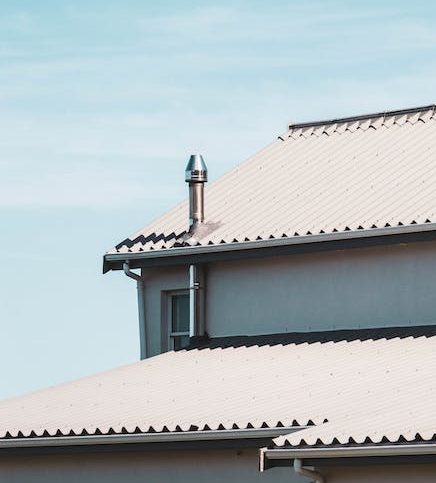Back to Blogs
Avoiding Leaks: 20 Common Mistakes to Steer Clear of in Roof Flashing Installation
November 17, 2023

Roof flashing is a crucial component of any roofing system, providing a watertight seal around openings and joints to prevent leaks. However, improper installation can lead to a host of issues, from water damage to structural problems. In this article, we’ll explore 20 common mistakes that often occur during roof flashing installation, helping you identify and avoid potential pitfalls.
Poor Sealant Application
Neglecting to apply a sufficient amount of sealant can compromise the flashing’s ability to create a watertight seal. Always follow manufacturer guidelines for sealant application.
Incorrect Flashing Material
Choosing the wrong type of flashing material for the specific roofing application can result in premature deterioration and leaks. Ensure that the selected material is suitable for the environment and conditions.
Inadequate Step Flashing
Step flashing, used where the roof meets a sidewall, must be installed correctly. Failing to install enough step flashing or improperly placing it can lead to water penetration.
Neglecting Counter Flashing
Counter flashing is essential for protecting the top edge of step flashing. Omitting counter flashing or installing it incorrectly can leave your roof vulnerable to leaks.
Poorly Installed Valley Flashing
Valleys are prone to water accumulation, and improper installation of valley flashing can result in water seepage. Ensure that valley flashing is securely installed and free from gaps.
Using the Wrong Fasteners
Utilizing incorrect or incompatible fasteners may compromise the flashing’s integrity. Always follow manufacturer recommendations for the appropriate fasteners.
Overlooking Drip Edge Installation
Drip edges play a crucial role in directing water away from the roof. Neglecting to install drip edges or installing them improperly can lead to water infiltration.
Ignoring Roof Pitch Considerations
Roof pitch influences water runoff. Failing to account for the roof pitch during flashing installation can result in inadequate water drainage and increased risk of leaks.
Improperly Installed Skylight Flashing
Skylights require special attention during flashing installation. Incorrect installation can lead to water pooling around the skylight, causing leaks.
Neglecting Chimney Flashing
Chimneys are common sources of leaks. Ensure proper installation of chimney flashing, paying attention to details such as counter flashing and sealant application.
Skipping Roof Inspection
Failure to conduct a thorough roof inspection before flashing installation can lead to overlooking existing issues that may compromise the effectiveness of the flashing.
Incorrectly Installed Kickout Flashing
Kickout flashing is crucial for preventing water from infiltrating the wall at the point where the roof meets a sidewall. Incorrect installation can lead to water damage.
Ignoring Expansion and Contraction
Flashing materials expand and contract with temperature changes. Neglecting to account for these movements can result in flashing failure over time.
Inadequate Lapping
Insufficient overlapping of flashing sections can create weak points that are prone to leaks. Ensure proper lapping to enhance the overall integrity of the flashing system.
Using Damaged Flashing
Installing damaged or bent flashing jeopardizes its ability to provide a secure seal. Inspect all flashing components before installation.
Incorrectly Sized Flashing
Using flashing that is either too large or too small for the application can lead to inefficiencies and water infiltration. Choose the appropriate size based on the specific roofing details.
Neglecting Sealant Compatibility
Using sealants that are incompatible with the flashing material can result in degradation and compromised waterproofing. Always check for compatibility before application.
Poorly Designed Cricket or Saddle
Roof features like chimneys and vents may require crickets or saddles to divert water. Improperly designed or installed crickets can lead to water pooling and leaks.
Disregarding Weather Conditions
Installing flashing during adverse weather conditions, such as rain or extreme temperatures, can hinder the effectiveness of sealants and compromise the overall installation.
Lack of Proper Training
Improper installation often stems from a lack of training or experience. Ensure that the individuals responsible for flashing installation are adequately trained and follow industry best practices.
Avoiding these common mistakes in roof flashing installation is crucial for maintaining the integrity of your roofing system. By paying attention to detail, following manufacturer guidelines, and conducting thorough inspections, you can significantly reduce the risk of leaks and water damage in your home or building.
